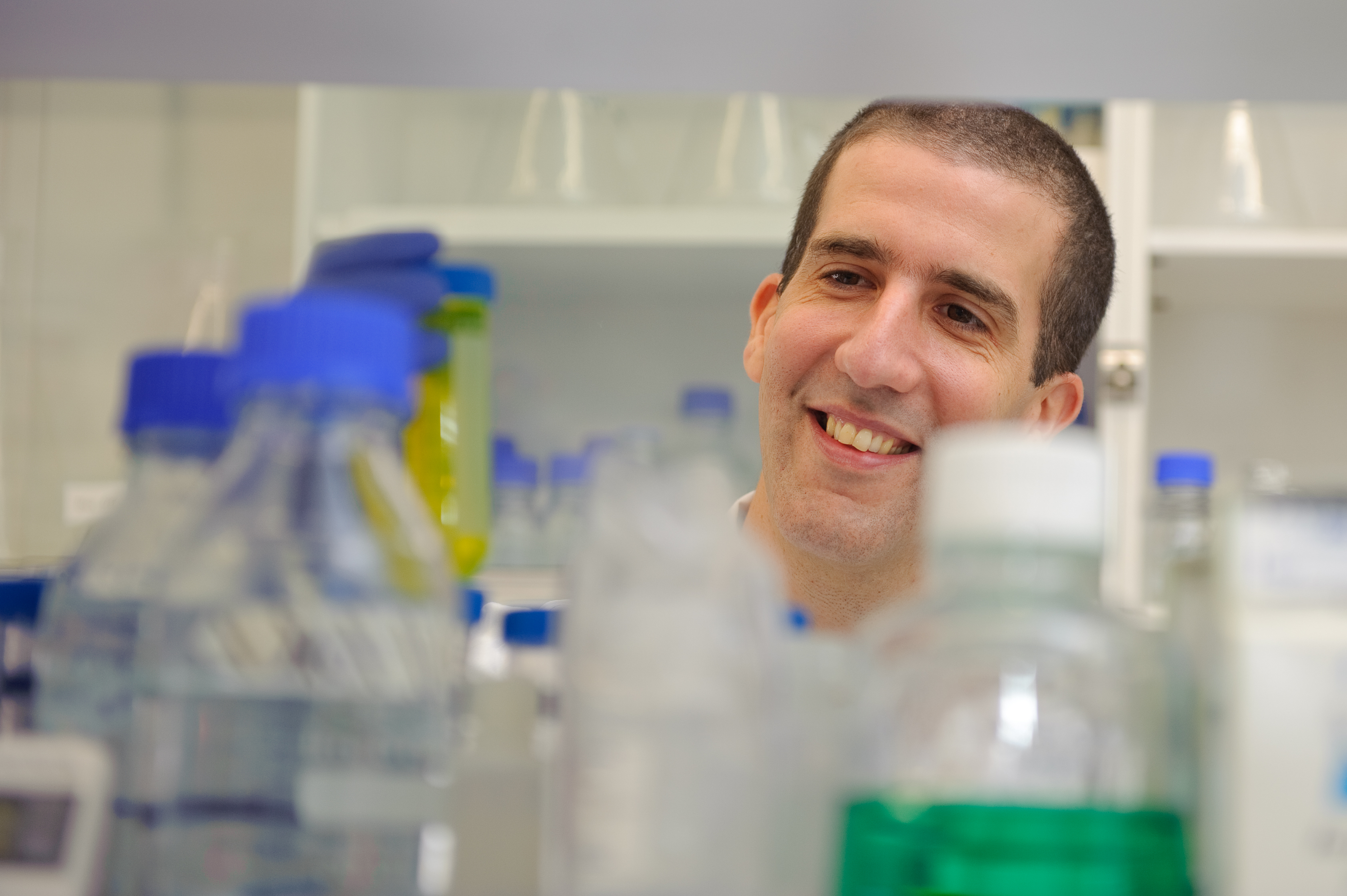
Dr. Sarel Fleishman
With dating sites, you can search for a partner who has everything you want, from physical attributes to religious beliefs, education to hobbies, geography to age – and yet finding a mate is challenging for many. Wouldn’t it be nice if the other person could be changed here and there to meet your requirements?
This wish-list technology doesn’t exist yet … for humans. For proteins, it’s another matter, thanks to Dr. Sarel Fleishman at the Weizmann Institute of Science. “I started my career asking, essentially, how do proteins mate?” he says. “They each have knobs and holes that must fit together in a complementary way.”
Dr. Fleishman, now in the Department of Biomolecular Sciences, previously worked as a postdoctoral fellow at the University of Washington in Seattle, where he developed a first-of-its-kind method to “fine tune” various physical features on the surface of a protein molecule. It enables the scientists to redesign these surfaces so that they will fit with, and strongly bind to, target proteins.
By creating proteins that precisely match the “knobs and holes” of target proteins, Dr. Fleishman is able to stop disease-causing molecules from triggering illness.
But Dr. Fleishman’s goal isn’t just making proteins happy: his method could help cure a range of diseases. “In the future,” he states, “we’d like to be able to create antibodies for any marker that’s been identified as causing disease.”
Produced by the immune system, antibodies are protein molecules that neutralize invading pathogens such as viruses and bacteria. Antibodies attack the invaders by binding to their surface, which blocks their function. Aiming to harness this ability, Dr. Fleishman and his team are investigating how a specific antibody protein molecule can bind to a specific invader protein molecule.
The scientists have already used their technique to create new proteins that can bind to the active site on the surface of an influenza virus, obstructing its activities and preventing it from causing illness. The designed protein molecules, attracted to the virus, block flus ranging from avian to swine to Spanish. The scientists are currently investigating these molecules as potential flu-stopping therapies.
![shutterstock_154669337 [Converted]_white puzzle shutterstock_154669337 [Converted]_white puzzle](/media/1210/shutterstock_154669337-converted-_white-puzzle.jpg)
How does Dr. Fleishman create his matchmaking magic? In addition to sophisticated computer analyses of the physical properties of proteins, Dr. Fleishman’s method makes use of a number of online databases of protein molecule structures – including pioneering databases developed at the Weizmann Institute.
The process begins with theoretical computation to determine the ideal molecular structure needed to perfectly bind to the active site of a target protein: dreaming up just the right “mate.” The next step is to scan the protein structure databases to find natural molecules into which the programmed active site might feasibly be integrated, much as a dating site sorts through thousands of profiles to find the few best potential matches.
The technique could lead to new antibodies and treatments aimed at viruses, bacteria, even cancer cells.
In the case of the new flu-binding proteins, several dozen proteins were altered to include the new binding site. Of these, five succeeded in the lab in binding to the targets. Of the five, just one managed to block the ability of various flu viruses to spread. This is much like the narrowing-down process that takes place on a dating site when you start communicating with the suggested partners: some clearly don’t work for you, some seem like good matches at first, and then – if you’re lucky – there’s one you really click with.
“The antibodies we’re creating don’t exist in nature,” says Dr. Fleishman. “Such programmed molecules could give us the ability to direct molecular activities, and they might have a wide range of applications in medicine, diagnostic tools, and biotechnology, including the design of new drugs.”
For example, Dr. Fleishman’s team recently created antibodies targeting insulin; such antibodies could be used to develop new tests for diagnosing diabetes.
Dr. Fleishman is working now to ensure that his technique can be applied to develop antibodies against any target protein, and that any scientist can potentially use it. By thus making his method flexible and able to be widely used, he is helping spread the benefit of his research worldwide – helping more people, faster.
“I see this as a platform for targeting viruses, bacteria, and even cancer cells,” he says.
Dr. Fleishman’s team recently created antibodies targeting insulin; such antibodies could be used to develop new tests for diagnosing diabetes.
A native Israeli, Dr. Fleishman completed his MSc and PhD in biochemistry at Tel Aviv University. Following his postdoctoral fellowship at the University of Washington in Seattle, he joined the Weizmann Institute faculty in 2011.
“It’s a wonderful place to be,” he says of the Institute. He particularly values the specialized resources on campus such as the Israel Structural Proteomics Center; its scientists use advanced computational tools and robotics to assist Dr. Fleishman’s team in analyzing the structure of the proteins they are studying.
“These kinds of excellent resources make it possible to work in a relatively small lab and yet achieve a very large impact with the work we’re doing,” says Dr. Fleishman.
Dr. Sarel Fleishman’s research is supported by the Rothschild Caesarea Foundation; Sam Switzer, Canada; and the European Research Council. Dr. Fleishman is the incumbent of the Martha S. Sagon Career Development Chair.
